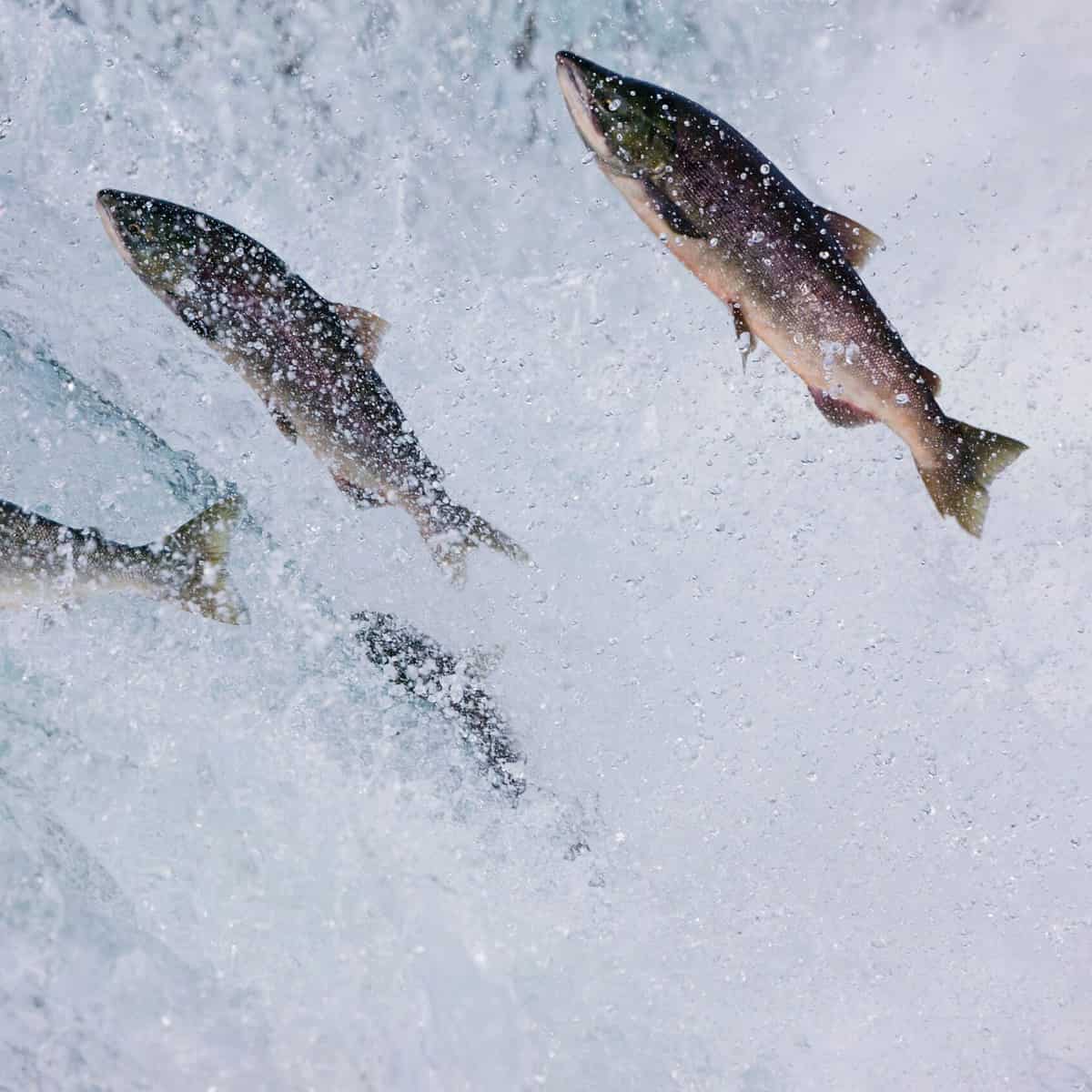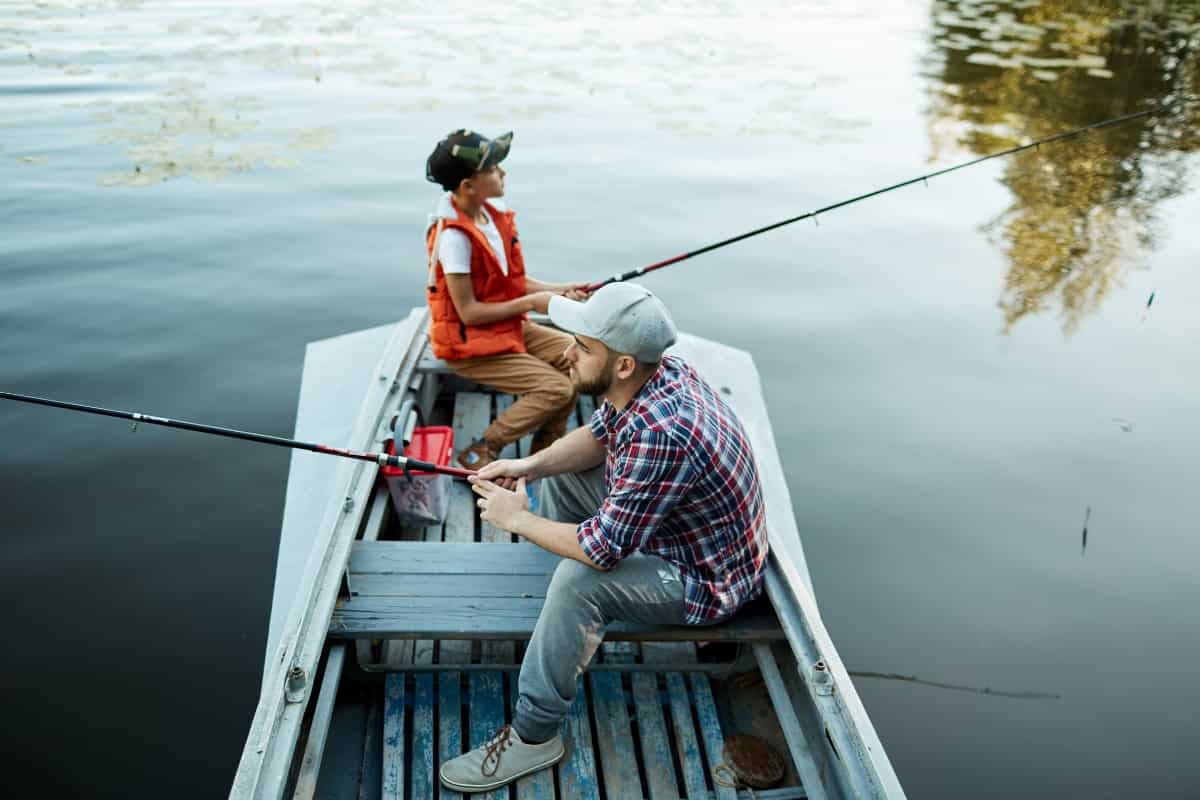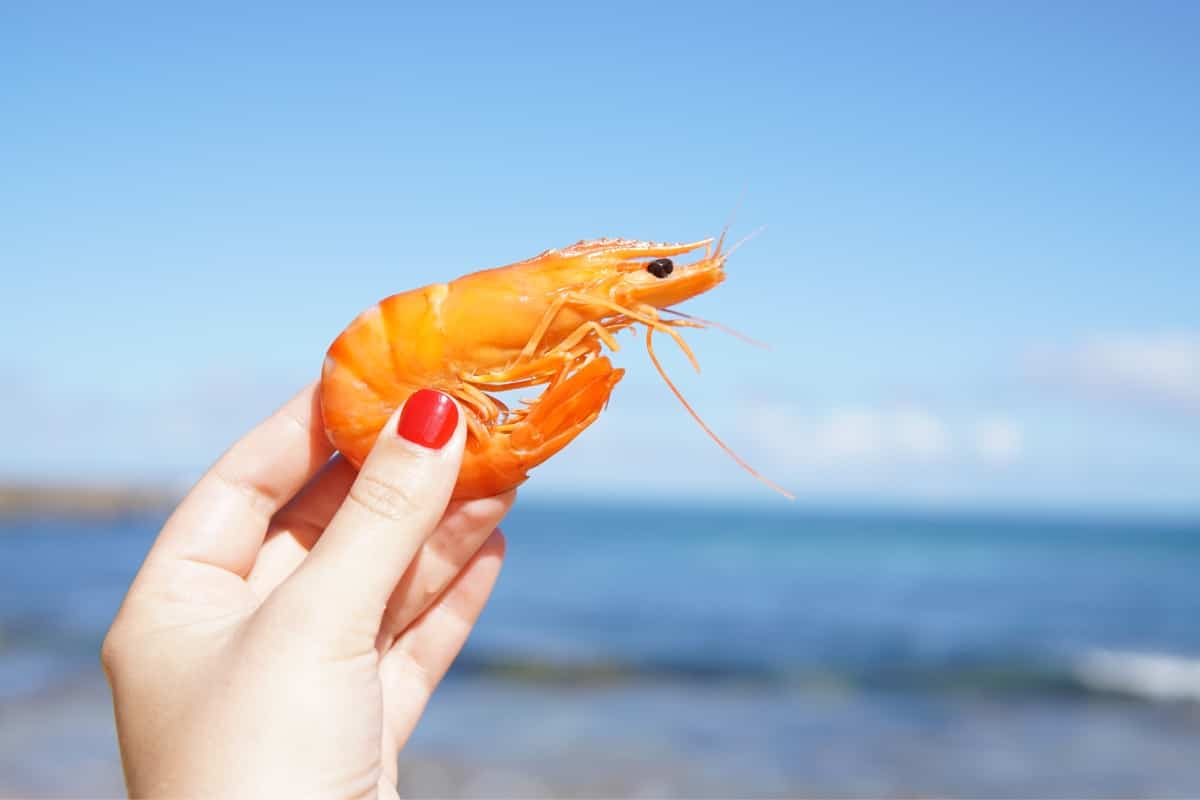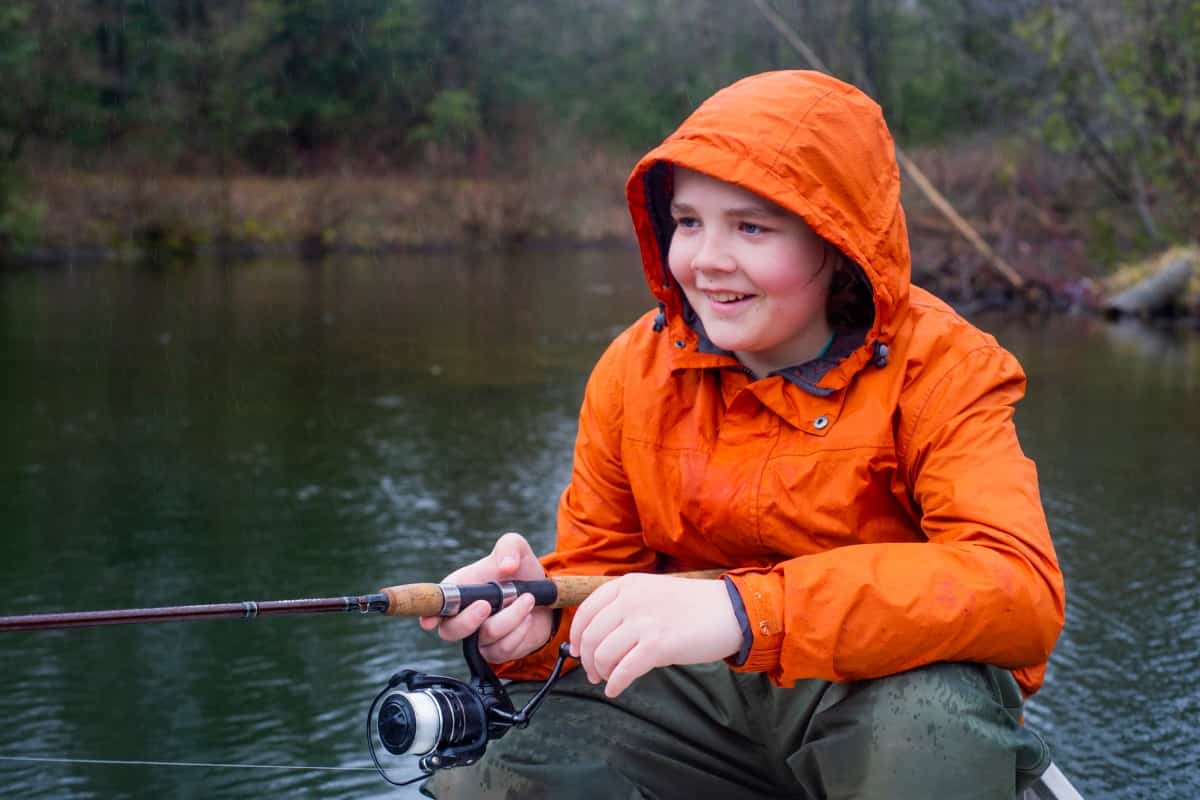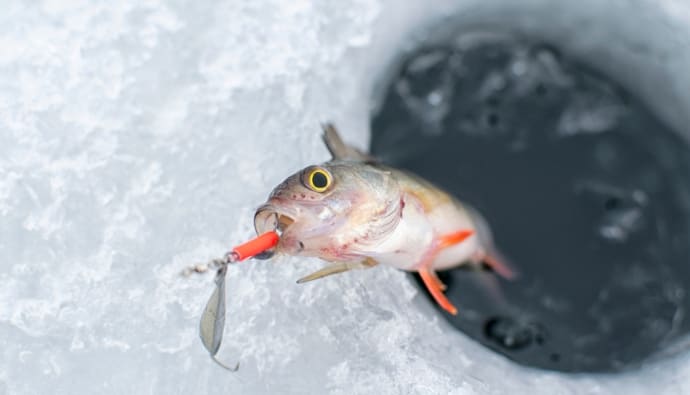Many anglers like yourself go to lakes and rivers to catch different kinds of fish during winter. One of the most sought-after fish during this time are the brown trouts.
It can be a busy time for anglers again, but there are some things that the average angler needs to know about catching brown trout during the cold season.
Before you put on your jacket and prepare your artificial lures or wax worms, read the guide below to know more about ice fishing for brown trout.
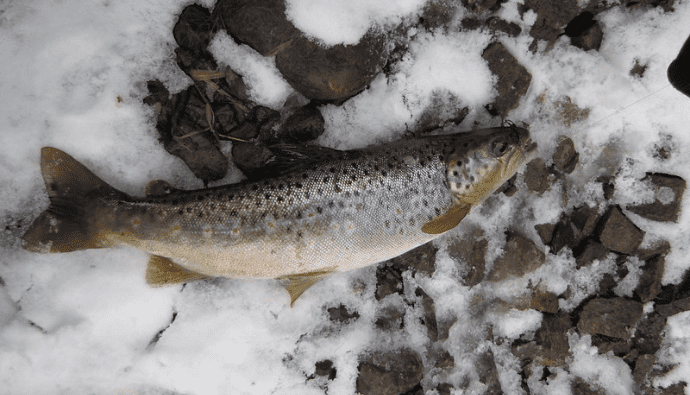
What are some helpful tips?
You don’t just go on your adventure without preparing your things. It would be best if you had a solid plan as to how you’ll execute each step. Here are tips worth remembering;
1. Mark Your Safe Zone
Make sure you’ve marked a safe area. The recommended is 5 inches of ice to support your mass. It’s best to look into weather conditions before you proceed.
This way, you can make sure the ice is frozen solid to hold you. Check your surroundings and look out for deep water. Shallow water can be great too; however, expect lesser catches of brown trout in these areas.
2. Monitor The Stocking Report
If you’re looking to fill those holes in the ice slowly, a late-season stocking for more fish will help make things a little easier.
Trout lays their fresh spawn during early winter, while steelhead spawn is seen in early January.
3. Choose The Best Fishing Line
Compared to a monofilament, the braided line can get you more out of your fishing trip. It has the same amount of bend, but the line holds more water.
You may still use the standard monofilament if you want. You might want to add a fluorocarbon leader because it’s less visible to ice fish. It is also recommended to choose the best bait for your angling activity.
What are the techniques for catching one?
Thousands of anglers are using ice fishing techniques to catch trout, walleyes, and salmon. But no matter how much you like to fish, there are some things you need to know before you do it.
The following ice fishing tips will make your next angling activity more successful.
1. The rod and reel are required for ice fishing
You’ll need a medium-action rod and reel to hook cold water brown trout. The rod and rod tip can be as simple as a long pole, or if you prefer, you can buy the reel separately.
Anglers fishing in big water will need to beef up their tackle to seize the prize. A 32-inch one is a good choice.
Should you be angling small ponds, lakes, and rivers, you’ll need to get a lighter rod. If you’re used to a heavier casting pole, then you are very much welcome to explore deeper waters. Take note that there are several manufacturers for all types of rods.
The braided line has a high-performing fiber designed to give you the best fabric. Its strength is also much higher than other fibers on the market.
Consider a 30-pound test to see its durability. However, it’s better to use it during shelter fishing.
2. Prepare and be knowledgeable in using ice fishing lures
There are many different kinds of fish in the waters, and there are techniques and special equipment for ice fishing designed to capture each one.
You need to match the spoon to the size of the forage in your lake to attract fish. When you’re on the go or want to stay cool, these traditional ice-angling spoons are great for catching fish.
There are other different baits like the Kastmaster, Little Cleo, and Flutter Spoon.
Rapala Jigging Raps are common ice-angling lures sent out in different ways by variations in the retrieve speed.
These are designed to be reshaped and reshaped again, giving you the variety you need to find the bait that catches your desired fish. This makes Rapala Jig the best ice fishing bait.
You can also check out our top picks for the best ice fishing jigs and lures.
Trout Fishing In Rivers
Here are trout fishing tips in rivers.
The ice thickness is very difficult to determine for varied current flow like the river. Since it’s common for anglers to catch trout in the river, make sure to game fish with at least 4 inches of ice.
Safety should still be a priority. These fishes prefer the low current and reside mostly at the sandy bottom, so always test the water before casting your line.
Locating the fish is difficult, given the thick sheets of ice. Just look at the shoreline, and the button will reflect if it’s muddy or sandy.
Brown trout are hunted in rivers—especially in the cold water of the northern hemisphere. Make sure to avoid the light coming as trout’s behavior differs during daytime.
Remember, most trout are found in water levels between 3-5 feet of water. Look at the edges of a pool because that’s where the fish usually stay during the cold season. They are not mobile but prefer slack water, so it’s a good call to check the near bottom.
After feeding, they hide in a mid-water column for many weeks. That’s why they can survive the cold and may become very aggressive once caught.
During this fish approach, you may also capture rainbow trout. They inhabit large streams of rivers. Unlike browns, they can hold much stronger river currents and heavy amounts of ice water.
Trout Fishing In Lakes
When catching lake trout, you usually stay near a structure for safety, specifically in Lake Michigan. In their first break, you can see them around 10 feet on the water.
During the second, however, they can be found in deeper water. They can go as deep as 50-60 feet. Thankfully, your tip-ups greatly help in catching fish in all trout ice levels.
Most anglers are attracted to Lake Shiner, Creek’s Mouth, and Lake Superior as the best ice fishing spots for brown trout. While Lake Shiner is the best place for fishing brown trout, Lake Superior has emerged as the standard gold spot in Michigan.
People love to catch fish in the former; however, they will probably never stop fishing in Lake Superior.
You may also check out Milwaukee Harbor since it’s small and freezes easily during the first ice. You can set lines and capture browns there.
Fish Expert Gage Sackett On Jigging Techniques
Jigging spoons are the best lure for catching trout through ice and open water. Put a full minnow head on it, and it will surely help a lot. Remember to use a 34″ -38″ medium action rod with a 6-10 monofilament.
Browns are fast fish, and they like fast jigging a lot of the time. They have a very high tolerance for being hooked, so you can easily seize them in your jigging net or lure.
The challenge with catching them is that they will not bite once they drop their live bait to the bottom of the water. When it gets too hot and too heavy for the fish to swim, they will take it back to the top and lose interest again to trap another fish.
Close the bail on the reel and start jigging up fast so that the fish will hit right away! You can minnow your head to excite them further.
Safety Equipment You Can Bring For Your Ice Fishing
You can’t predict emergencies during your fishing ventures. Knowing essential tips and techniques for catching brown trout is necessary, but it is not enough. It is also important to carry safety devices with you when fishing. Don’t forget to add these to your list of things to bring:
- Cell Phone – To call for help, you need your working mobile phone with you. It’s best to place it in a ziplock bag to keep it dry.
- Ice Picks – It may sound dangerous to carry one with you, but if you fall in the water, you can use these to pull yourself out.
- Floatation Device – It will come in handy once you kneel and seize a fish. Ideally, use a floatation device with 50 feet of line.
- Spud Bar – You can throw this to check the ice’s length. Don’t forget to thrust far so that you won’t get spawned by the water.
Conclusion
Your next fishing trip will sound more exciting as you’ve learned about these tips and techniques.
Remember to put your safety beyond anything and check the favorable weather conditions before you set lines. You’ll find the jigging techniques very useful once you fish for some huge brown trout.



 Facebook
Facebook YouTube
YouTube
